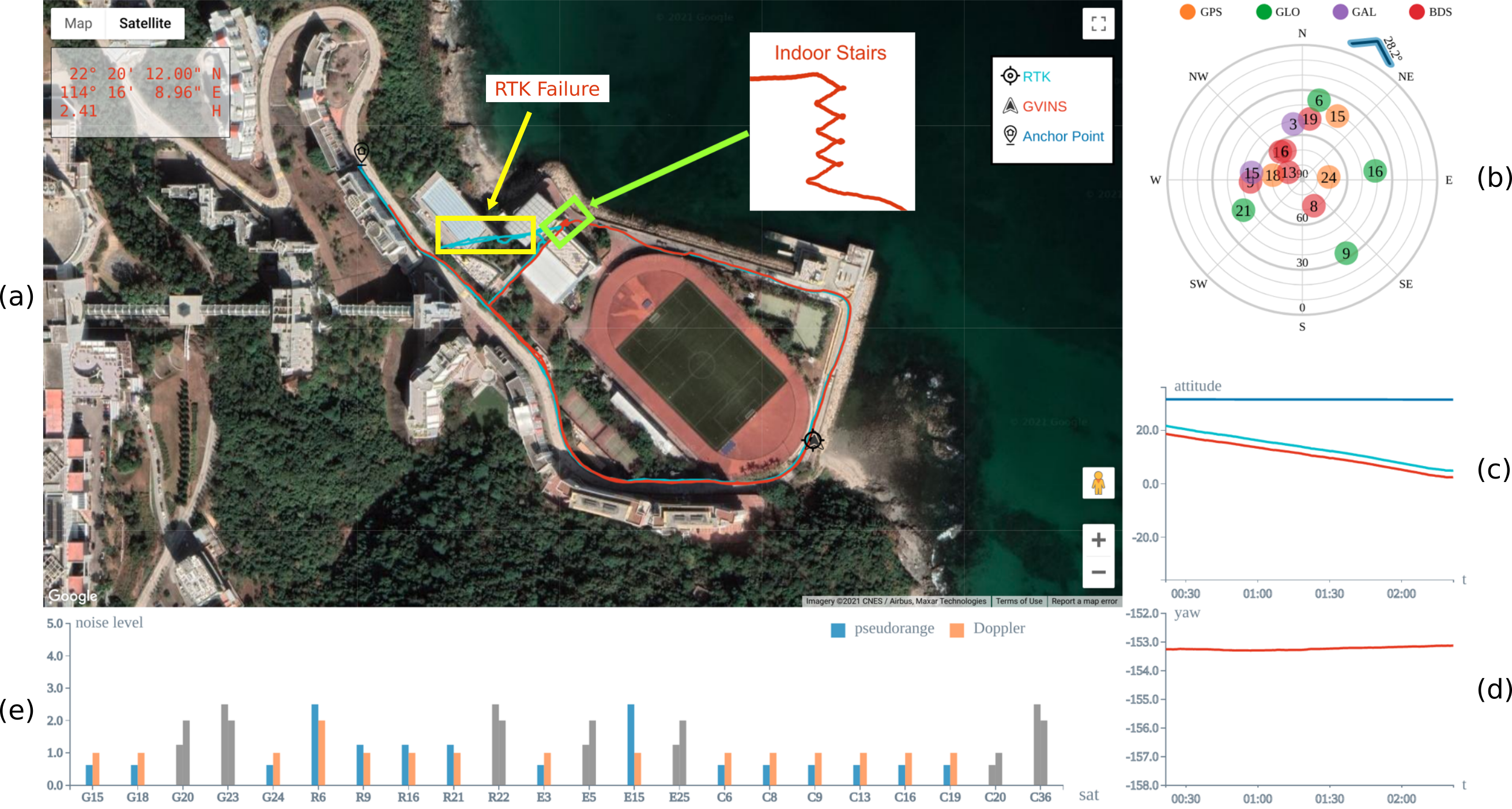GVINS: Tightly Coupled GNSS-Visual-Inertial Fusion for Smooth and Consistent State Estimation
Visual-Inertial odometry (VIO) is known to suffer from drifting especially over long-term runs. In this paper, we present GVINS, a non-linear optimization based system that tightly fuses GNSS raw measurements with visual and inertial information for real-time and drift-free state estimation. Our system aims to provide accurate global 6-DoF estimation under complex indoor-outdoor environment where GNSS signals may be intermittent or even totally unavailable. To connect global measurements with local states, a coarse-to-fine initialization procedure is proposed to efficiently calibrate the transformation online and initialize GNSS states from only a short window of measurements. The GNSS code pseudorange and Doppler shift measurements, along with visual and inertial information, are then modelled and used to constrain the system states in a factor graph framework. For complex and GNSS-unfriendly areas, the degenerate cases are discussed and carefully handled to ensure robustness. Thanks to the tightly-coupled multi-sensor approach and system design, our system fully exploits the merits of three types of sensors and is capable to seamlessly cope with the transition between indoor and outdoor environments, where satellites are lost and reacquired. We extensively evaluate the proposed system by both simulation and real-world experiments, and the result demonstrates that our system substantially eliminates the drift of VIO and preserves the local accuracy in spite of noisy GNSS measurements. The challenging indoor-outdoor and urban driving experiments verify the availability and robustness of GVINS in complex environments. In addition, experiments also show that our system can gain from even a single satellite while conventional GNSS algorithms need four at least.
PDF Abstract